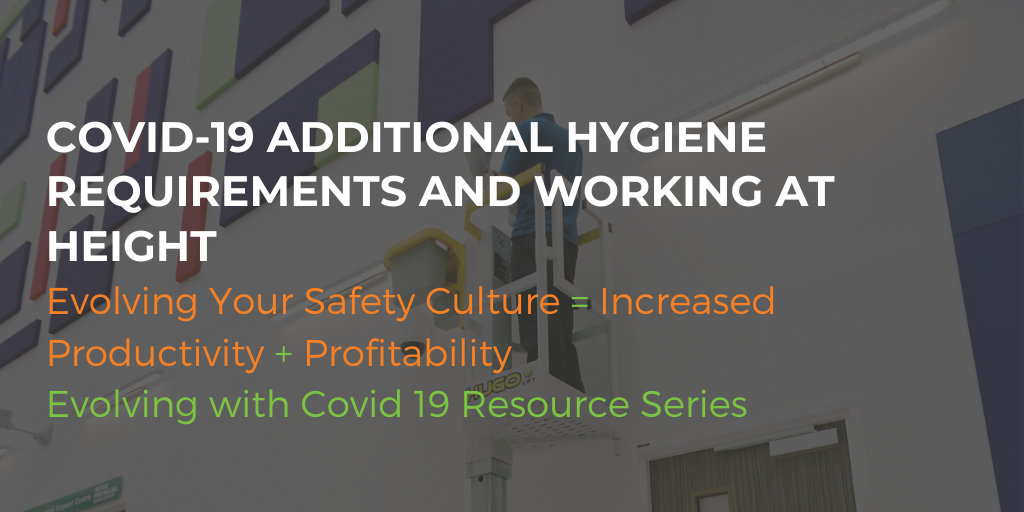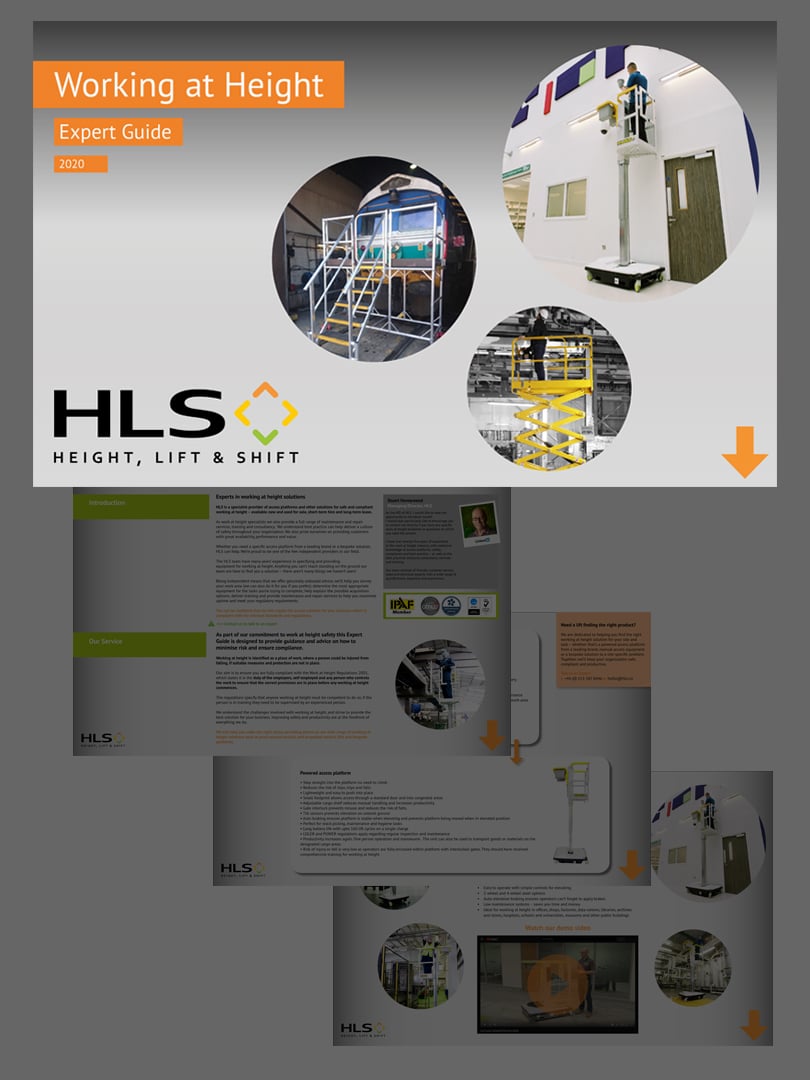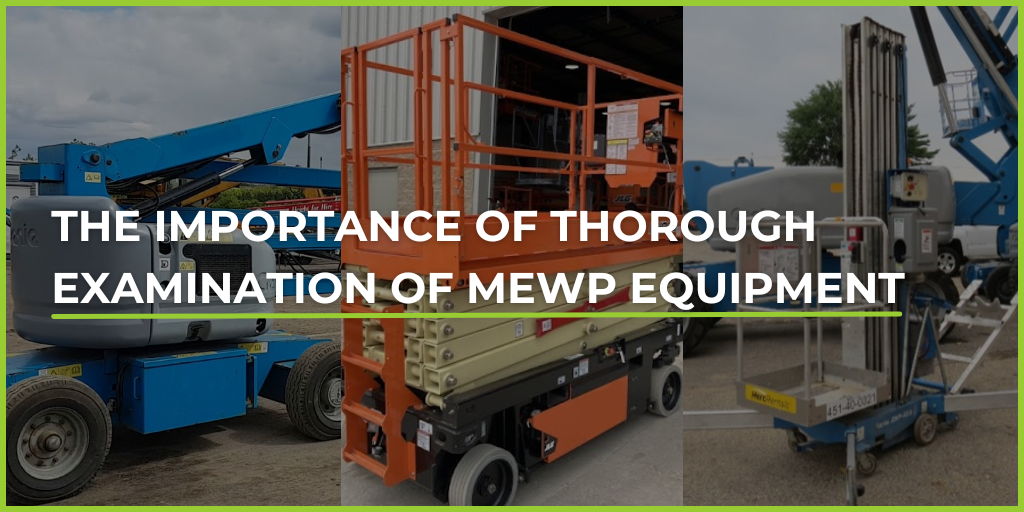Since the introduction of covid-19 guidance for workplaces in April 2020, it has meant that everyday work activities such as cleaning carried out whilst working at height have needed to be continually reviewed and monitored to manage the additional risks.
Adding to this increased hygiene requirements and social distancing, placing additional pressure on existing equipment and procedures, it is now more important than ever to ensure that you have the right access equipment, which is crucial for ensuring safety and efficiency. This blog will help you keep anyone who works at height safe from falls and coronavirus in the workplace.
Conduct a workplace work at height equipment review and consider additional hygiene requirements:
1. Review your current every day and non-everyday tasks
The first step is to consider what are the necessary hygiene tasks that you need to undertake daily at your building or site. Then identify the non-everyday tasks that may include additional sanitisation and deep cleaning. Finally, identify which of these tasks will be undertaken at height.
2. Ongoing
The next step is to consider the frequency of and duration of the cleaning tasks required on an ongoing basis, including equipment and machinery, etc.
This needs to be included in your working at height risk assessments.
Any work at height requires a safe system of work based on a risk assessment. Where this work is considered essential, your risk assessment must include the additional hygiene considerations in light of Coronavirus.
Key areas of hygiene to be reviewed:
1. Environment hygiene
This includes building, infrastructure, heating and ventilation systems.
2. Equipment hygiene
This includes production line, machinery and work equipment. Risk assessments will identify the need for any training or additional equipment.
Consider deep cleaning your work at height equipment itself and how regularly you might do this. If you hire equipment for non-everyday tasks, get it from a work at height specialist such as HLS who will be able to advise on their cleaning regime and other safety precautions.
Safety & Health Practitioner published guidance on selecting and using the correct disinfecting chemicals and methods, which you may find helpful.
3. People hygiene
Employees, customers, contractors and visitors all require clear hygiene instructions. Reinforcement of these will create a positive personal hygiene culture over time.
Remind workers not to touch their face while using work at height equipment and tell them to wash their hands before and immediately afterwards, even if they’ve been wearing gloves. This is especially important if the same equipment is used by multiple people.
In the UK, the Health and Safety Executive says that equipment and work stations should be cleaned between uses.
At this point, you may need to consider if you have the right equipment for the frequency and duration and whether you may also need to supplement existing equipment for both every day and non-everyday tasks to manage all hygiene procedures efficiently.
In Summary
Constantly reviewing your equipment, processes and training will help to protect your employees and your organisation from falls and COVID-19.
All of the above need to be reviewed in terms of the tasks time and frequency - any increase in time and/or frequency will mean you need to reassess the equipment you are using.
It’s essential that you communicate with all staff members, keeping them updated with the latest advice and guidance, helping to create a positive safety culture and to reinforce healthy habits whilst working at height during the pandemic.
Stay informed and follow the latest advice given by your industry associated trade bodies and unions for the guidance specific to your sector on COVID-19 compliance. They are best placed to advise you on what steps you need to take.
We are here to help find the right solutions to overcome any work at height challenges and help your business adapt to operating safely during the coronavirus outbreak.
Together, we’ll keep your organisation safe, compliant and productive.
If you’d like to know more please contact us by phone, email or our contact form.
HLS is a leading work at height consultancy, providing a wide range of products and services for safe and efficient work at height. If you would like to find out more about a working at height onsite survey and risk assessment or you would simply like some expert advice, please do not hesitate to contact us at HLS.





